Emperor Gum Moth (Opodiphthera eucalypti)Emperor Gum Moth Pupa and Caterpillar
The lifecycle of the Emperor Gum Moth (Opodiphthera eucalypti), consists of four main stages — egg, larva, pupa and adult. Together, the stages are known as “complete metamorphosis”. These stages are common to all butterflies and moths.
The eggs that were laid by the female Emperor Gum Moth, are glued to the leaves of the eucalypt by the female moth.
Eggs of the saturniid gum moth attach using a protein-based secretion that sets to form a highly elastic hydrogel.
“Biochemical and electrophoretic screening of 29 adhesive secretions from Australian insects identified six types that appeared to consist largely of protein. Most were involved in terrestrial egg attachment…The strongest (1–2 MPa) was an egg attachment glue produced by saturniid gum moths of the genus Opodiphthera. ” (Li 2008:85)
“[W]e focused on the protein-based egg attachment glue produced by saturniid gum moths of the genus Opodiphthera. Stored as a treacle-like liquid in the accessory reproductive gland (colleterial gland) reservoirs of gravid females, the viscous fluid sets quickly to form a highly elastic hydrogel that binds newly laid eggs to the substratum and, in some circumstances, to each other. For the 7–10-day interval that normally separates the laying and hatching of eggs, the attachment glue must withstand environmental insults such as heat, wind and rain…The macroscopic properties of this material could make it an attractive target for biotechnological mimicry and subsequent commercial exploitation.” (Li 2008:86)
Source: Secretion Attaches Eggs, asknature 4
After hatching from the egg, the caterpillar commences to eat the eucalypt leaves. The small caterpillars are black when they hatch, with short hairs on top of small nodes on their bodies called tubercles. As they eat, the caterpillars will grow, which requires them to moult their outer skin. The Emperor Gum Moth caterpillars go through five stages of moulting, with each stage showing different range of colours.
The caterpillars can usually be seen between October through to March.


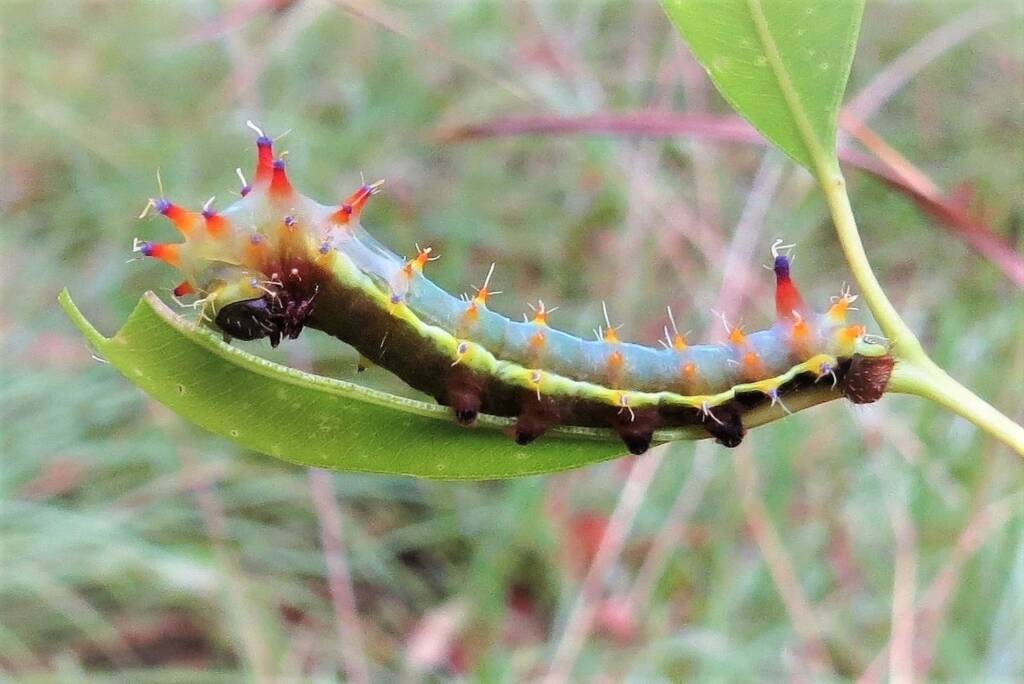
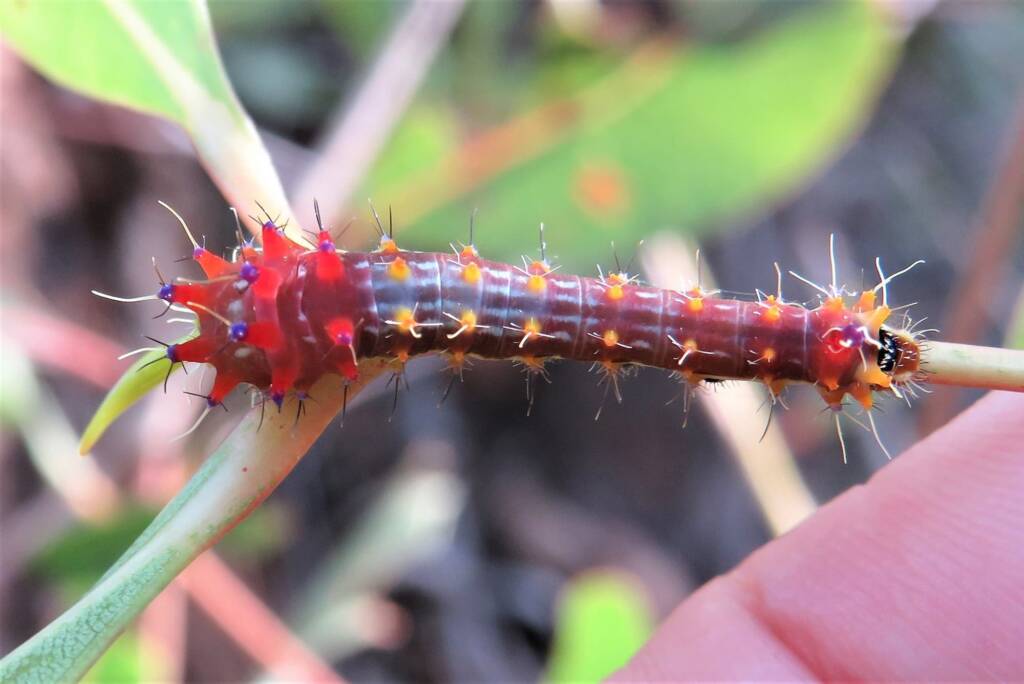
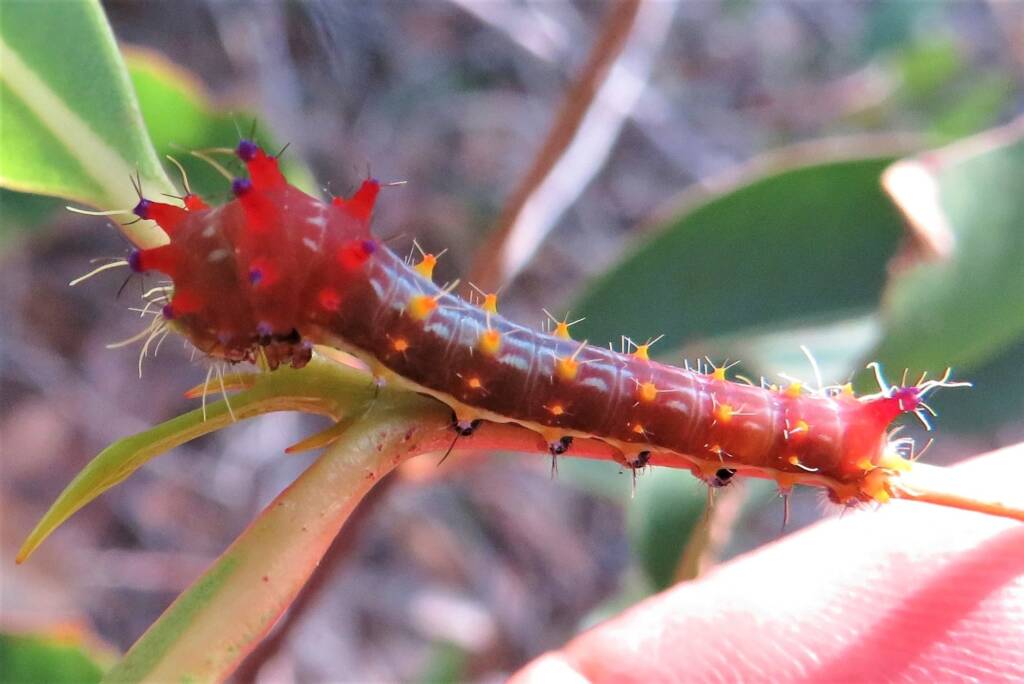

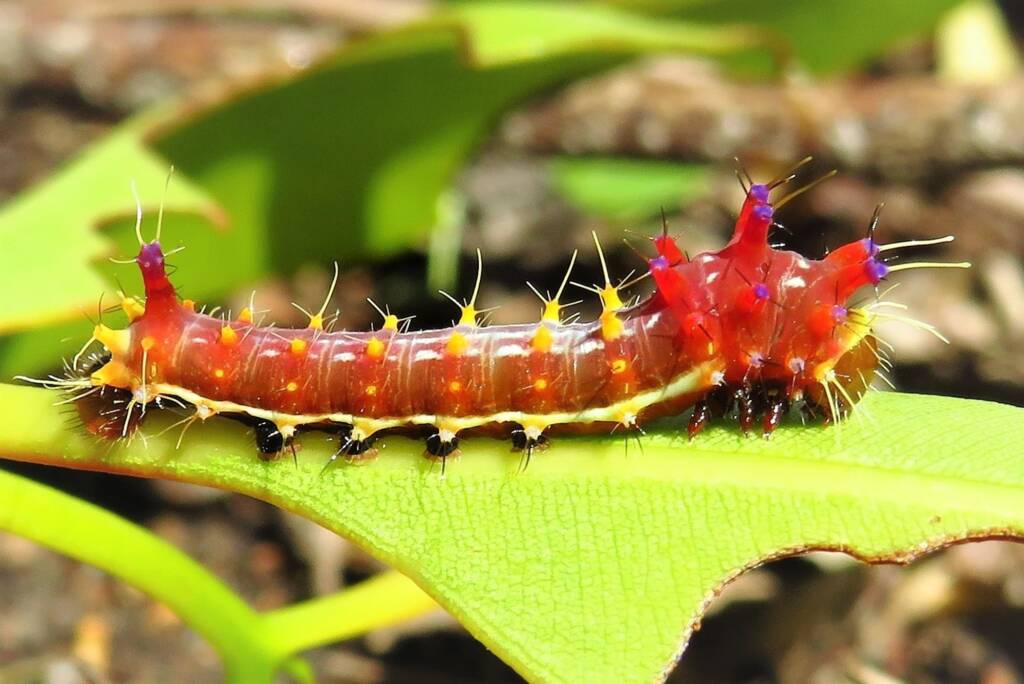
In the final instar stage before pupation, the caterpillars will have developed a yellow/cream stripe down their green/blue body, with nodes of red and blue.
Once the caterpillar is ready to pupate, they build a cocoon. Usually they will build the cocoon close to where they have been eating and moulting. They may reinforce the dark brown cocoon with bark for extra strength. The caterpillar of the Emperor Gum Moth are also known to build their cocoon against urban buildings. Pupation is thought to take anywhere between a couple of months to a few years (it has been reported anecdotally up to 5 years), with the adult moth usually emerging in summer.
Pictured here is an Emperor Gum Moth cocoon that has been recorded as first appearing against the door frameway of a home on the 26 January 2021, with the moth emerging 3 years later.
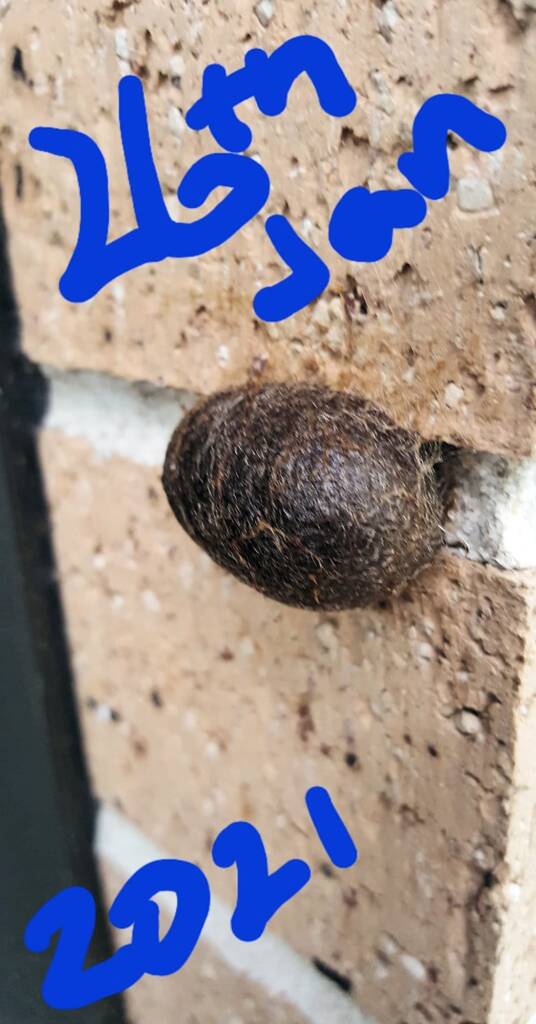
When the Emperor Gum moth is ready to emerge, the adult moth regurgitates a fluid to soften the tough cocoon, through which it cuts a hole using sharp hooks on the base of each forewing. This process releasing itself from the cocoon, is said to be vital for its wings to expand and dry after emerging. Pupae that have been cut from the cocoon will hatch, but the moths’ wings will never expand.
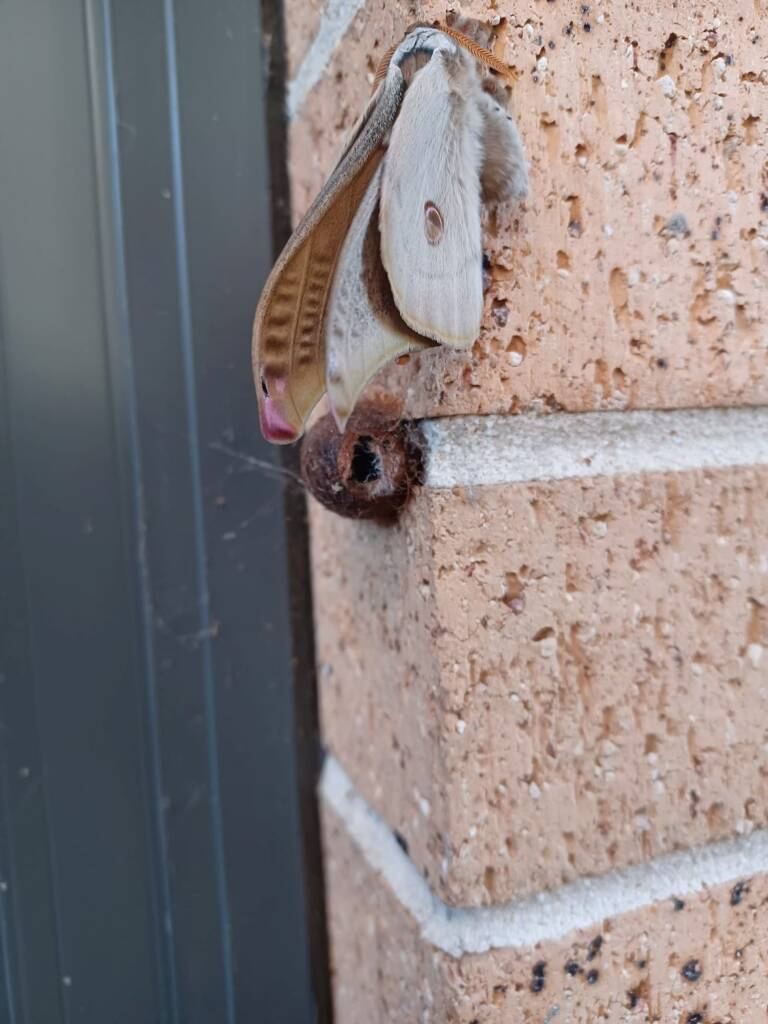
The life span of the Emperoro Gum Moth after it emerges from the cocoon, is limited to a couple of weeks, as they are unable to feed. They rely solely on what they had consumed and stored in their bodies as caterpillars. The task now for the moth is to mate and lay the next generation of eggs, before they die.



Footnote & References
- Emperor Gum Moth (Opodiphthera eucalypti) © Deb Taylor
- Emperor Gum Moth, debtaylor142, iNaturalistAU, https://inaturalist.ala.org.au/observations?place_id=6744&subview=map&taxon_id=68135&user_id=debtaylor142
- Emperor Gum Moth, Australian Museum, https://australian.museum/learn/animals/insects/emperor-gum-moth/
- Secretion Attaches Eggs, asknature, The Biomimicry Institute, https://asknature.org/strategy/secretion-attaches-eggs/
Emperor Gum Moth (Opodiphthera eucalypti)Emperor Gum Moth Pupa and Caterpillar
MothsMoths Index Aedia arctipennis Anthela guenei (Four-Spot Anthelid Moth) Australian Striped Hawk Moth Bag-shelter Moth (Ochrogaster lunifer) Case Moths (Variety of Cocoons) Coenotes eremophilae Convolvulus Hawk Moth Emperor Gum Moth (Opodiphthera eucalypti) Four-spotted Cup Moth Green-blotched Moth (Cosmodes elegans) Leaf Case Moth Mistletoe Emperor Moth Mistletoe Moth (Comocrus behri) Plume Moth Rattlepod Moth (Utetheisa) Ribbed Case Moth Sameodes cancellalis Saunders’ Case Moth (Metura elongatus) White-spotted Owl-Moth
